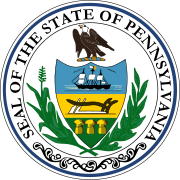The Anti-Masonic Party, also known as the Anti-Masonic Movement, was the earliest third party in the United States. Formally a single-issue party, it strongly opposed Freemasonry, but it later aspired to become a major party by expanding its platform to take positions on other issues. After emerging as a political force in the late 1820s, most of the Anti-Masonic Party's members joined the Whig Party in the 1830s and the party disappeared after 1838.

The 1836 United States presidential election was the 13th quadrennial presidential election, held from Thursday, November 3 to Wednesday, December 7, 1836. In the third consecutive election victory for the Democratic Party, incumbent Vice President Martin Van Buren defeated four candidates fielded by the nascent Whig Party.
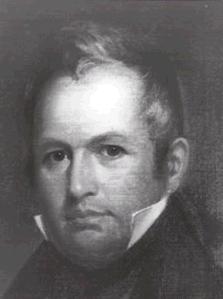
Joseph Ritner was the eighth Governor of the commonwealth of Pennsylvania, elected as a member of the Anti-Masonic Party. He was elected Governor of Pennsylvania in the 1835 Pennsylvania gubernatorial election, and served from 1835 to 1839. Controversy surrounding his 1838 electoral defeat led to the Buckshot War. In 1856, Governor Ritner was a delegate to the first Republican National Convention in Philadelphia.
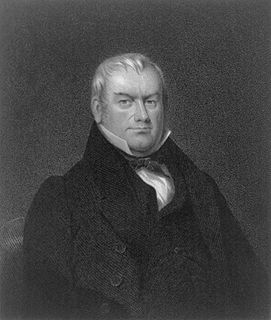
George Wolf was the seventh Governor of Pennsylvania from 1829 to 1835. On June 29, 1888, he was recognized as the "father of the public-school system" in Pennsylvania by the erection of a memorial gateway at Easton.
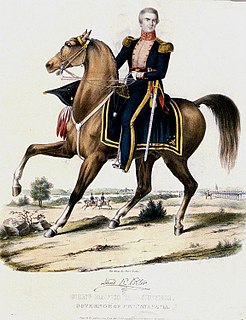
David Rittenhouse Porter was the ninth Governor of Pennsylvania and served from 1839 to 1845. He is the father of Horace Porter, the United States Ambassador to France from 1897 to 1905.
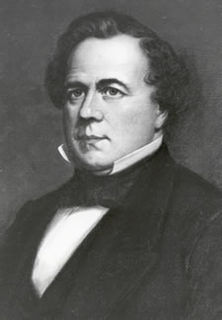
William Fisher Packer was an American politician from Pennsylvania who served as the 14th Governor of Pennsylvania from 1858 to 1861.
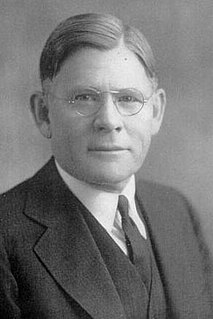
Arthur Horace James was an American lawyer, politician, and judge. A Republican, he served as the 14th Lieutenant Governor (1927–1931) and the 31st Governor (1939–1943) of Pennsylvania.

Henry Augustus Philip Muhlenberg was an American political leader and diplomat. He was a member of the Muhlenberg family political dynasty.

The 2006 Pennsylvania gubernatorial election was held on November 7, 2006 and included the races for the Governor of Pennsylvania and Lieutenant Governor of Pennsylvania.
The Buckshot War was the outbreak of unrest in Harrisburg, Pennsylvania that transpired after the Pennsylvania gubernatorial and legislative elections in 1838 when both the Whig and Democratic parties claimed control over the Pennsylvania House of Representatives.

The lieutenant governor is a constitutional officer of the Commonwealth of Pennsylvania. The lieutenant governor is elected for a four-year term in the same year as the governor. Each party picks a candidate for lieutenant governor independently of the gubernatorial primary. The winners of the party primaries are then teamed together as a single ticket for the fall general election. Democrat John Fetterman is the incumbent lieutenant governor. The lieutenant governor presides in the Senate and is first in the line of succession to the governor; in the event the governor dies, resigns, or otherwise leaves office, the lieutenant governor becomes governor.
The Pennsylvania Democratic Party is the affiliate of the Democratic Party in the U.S. state of Pennsylvania. It is headquartered in Harrisburg and is the largest political party in the state. Its chair is Nancy Patton Mills.

Pennsylvania has swung from being a Republican-leaning state during much of the 20th century to being a notable battleground state in presidential elections. Pennsylvania backed the Democratic presidential candidate in every election since 1992 up until 2016, when it was won by Republican candidate Donald Trump. Pennsylvania currently has a split government, with the governor's office being held by a Democrat Tom Wolf and both houses of the state legislature being controlled by the Republican Party. In the United States Senate, Pennsylvania is represented by Democrat Bob Casey Jr. and Republican Pat Toomey. In the United States House of Representatives, Pennsylvania is represented by nine Democrats and nine Republicans.

The 1854 New York state election was held on November 7, 1854, to elect the governor, the lieutenant governor, a Canal Commissioner and an Inspector of State Prisons, as well as all members of the New York State Assembly.

The 1998 Pennsylvania gubernatorial election was held on November 3, 1998. It was between incumbent Republican Tom Ridge, Democrat Ivan Itkin, Constitutionalist Peg Luksik and Libertarian Ken Krawchuk. Ridge, a popular moderate, won with 57% of the votes cast. As of 2022, this was the last time Delaware, Lackawanna and Montgomery counties have voted for the Republican candidate. It was also the first time since 1930 that Greene County, Fayette County, and Washington County voted Republican. This is the last time a Republican was re-elected Governor of Pennsylannia.

Thomas Westerman Wolf is an American politician and businessman serving as the 47th and current governor of Pennsylvania since 2015. A member of the Democratic Party, he defeated Republican incumbent Tom Corbett in the 2014 gubernatorial election and was reelected in 2018 by a margin of 17.1%. Prior to his election to the governorship, Wolf was the secretary of the Pennsylvania Department of Revenue from April 2007 to November 2008 and an executive in his family-owned business.

The 1799 Pennsylvania gubernatorial election was between two candidates. Incumbent governor Thomas Mifflin was not running. The race was between Federalist U.S. Senator James Ross and Democratic-Republican Thomas McKean. The retired Chief Justice of the Pennsylvania Supreme Court, McKean was a Federalist and a Mifflin ally, as both supported strong state executive power but rejected the domestic policies of the national government.
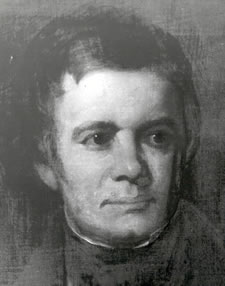
The 1838 Pennsylvania gubernatorial election was between two candidates. Incumbent Governor Joseph Ritner ran as an Anti-Masonic candidate. Ritner's defeat by Democrat David R. Porter prompted the Buckshot War.

The 1832 Pennsylvania gubernatorial election occurred on October 9, 1832. Incumbent Governor George Wolf, a Democrat, defeated Anti-Masonic candidate Joseph Ritner to win re-election.
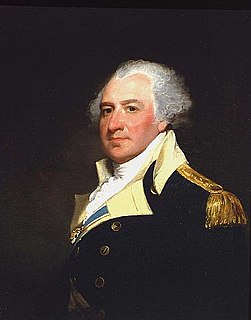
The 1793 Pennsylvania gubernatorial election occurred on November 5, 1793. Incumbent Democratic-Republican governor Thomas Mifflin sought re-election to another term, defeating Federalist candidate and U.S. Representative Frederick Muhlenberg. Muhlenberg only won two counties: York and Bedford. However, Mifflin's 2-1 vote margin was down from his 10-1 victory margin in the 1790 gubernatorial election.




